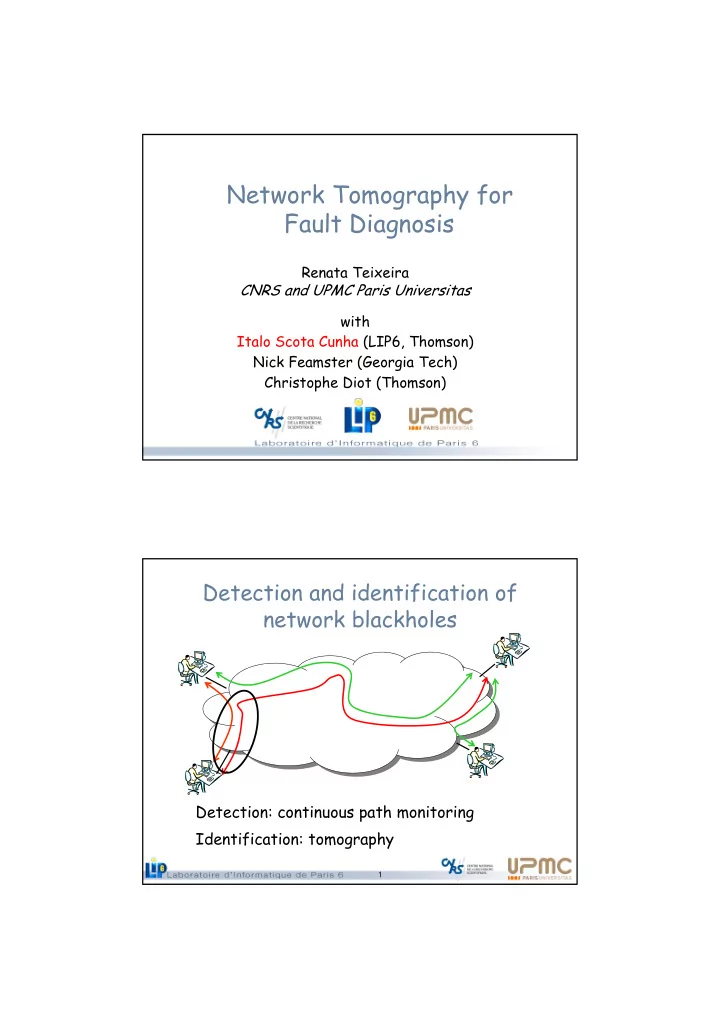

Network Tomography for Fault Diagnosis Renata Teixeira CNRS and UPMC Paris Universitas with Italo Scota Cunha (LIP6, Thomson) Nick Feamster (Georgia Tech) Christophe Diot (Thomson) Detection and identification of network blackholes Detection: continuous path monitoring Identification: tomography 1
Problem: Too many false alarms � Applying tomography on raw measurements – PlanetLab: one alarm per minute – Thomson VPN: one alarm every two minutes � Why? – Loss can be transient, topology can change – Different monitors see different conditions 2 Detection: transient losses vs. persistent failures � Monitors ping a set of destinations � Lost pings can have different causes � Congestion � Routing changes � Persistent failures � How to know which losses are persistent? 3
Failure confirmation � Upon detection of a failure, trigger extra probes � Goal: minimize detection errors loss burst packets on a path time Detection error 4 Probing strategy for failure confirmation � Which probing process? – Assume link losses follow a Gilbert process – Periodic probing minimizes detection errors � How many probes? – Confirm failures with a target detection-error rate – Assume independence and a given a loss rate � How much time between probes? – Reduce chance that probes fall on the same loss burst � Tradeoff: detection error and detection time 5
Identification through binary tomography t2 m t1 � Given: topology and end-to-end path statuses � Find the smallest set of links that explain observations 6 Lack of synchronization leads to inconsistencies Inconsistent measurements: Different monitors see different conditions
Achieving consistency: Aggregation strategies � Basic strategy – Waits for one cycle � Multi-Cycle strategy (MC) – Waits for n cycles with identical path statuses � Per-Path Multi-Cycle strategy (MC-path) – Only considers paths that are down for n cycles Evaluation � Evaluation is challenging – Need ground truth and realistic environment � Analytic modeling – Understand limits of the system � Controlled Experiments: Emulab testbed – Realistic environment – Control over failures � Wide-area Experiments: PlanetLab, Thomson – Real losses and failures, but no ground truth 9
Failure confirmation reduces false alarms Emulab experiments with 0.6% detection errors 10 Aggregation strategies identify most long failures Emulab experiments with 0.6% detection errors
Multi-cycle aggregation reduces false alarms Emulab experiments with 0.6% detection errors 12 Number of alarms in wide-area experiments PlanetLab Thomson � PlanetLab � Thomson – 56 paths – 39,800 paths – Cycles: 60 seconds – Cycles: 5 seconds 13
Summary � Tomography with raw data leads to false alarms � Two techniques to reduce false alarms – Failure confirmation • Distinguishes transient losses and persistent – Aggregation • Combines measurements from different monitors 14 Two deployment scenarios 15
Recommend
More recommend